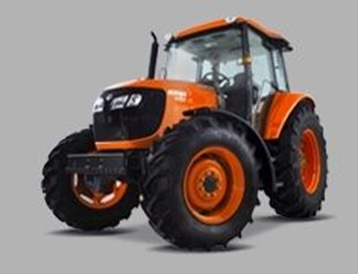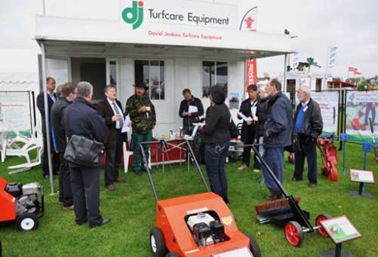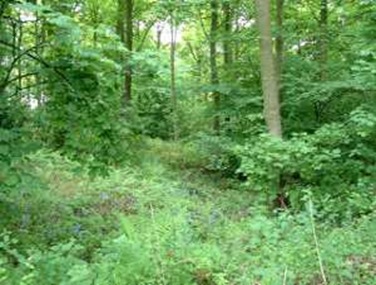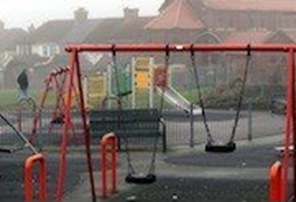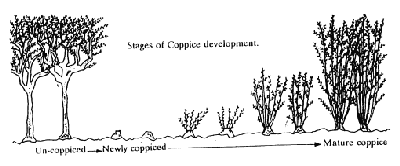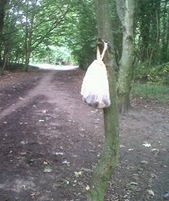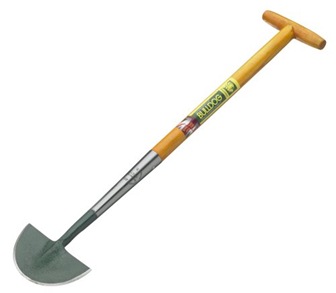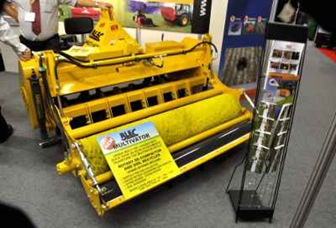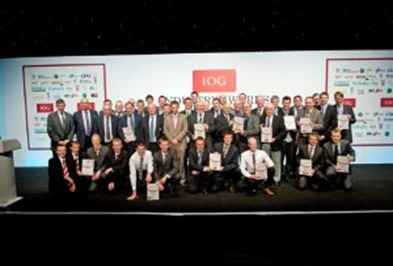 Almost 350 of the UK’s and Europe’s leading groundscare experts from both the professional and volunteer sector, as well as dignitaries from the governing bodies of sport and influential sports administrators, have honoured the expertise, dedication and passion of the country’s grounds profession at the Institute of Groundsmanship (IOG) Industry Awards.
Almost 350 of the UK’s and Europe’s leading groundscare experts from both the professional and volunteer sector, as well as dignitaries from the governing bodies of sport and influential sports administrators, have honoured the expertise, dedication and passion of the country’s grounds profession at the Institute of Groundsmanship (IOG) Industry Awards.
The packed Oscar-style ceremony at Bolton’s Reebok Stadium, home of Bolton Wanderers FC, recognised leadership, innovation and outstanding achievement across every aspect of groundscare – from grassroots pitches to professional stadia, including all types of public and private sports venues, and it highlighted the progress of young/student grounds professionals as well as product innovation.
Hosted by talkSPORT Radio’s Mark Saggers, the sell-out IOG Awards followed a day-long series of IOG Conference presentations by some of the biggest names in the industry from both sides of the Atlantic.
The winners of the 2011 IOG Industry Awards are:
Grass Roots Sports Ground of the Year – sponsored by Bayer
Winner: Heaton Sports Club
Finalist: Leamington FC, Warwickshire.
The facilities at Stockport-based Heaton Sports Club embrace cricket, rugby, tennis and lacrosse, including a four-lane cricket practice net area.
Volunteer Sports Grounds Management Team of the Year
Winner: Cleckheaton Sports Club, West Yorkshire
Finalist: Miskin Manor Cricket Club, Llantrisant, Wales.
Cleckheaton’s two-man team looks after five acres including cricket square and outfield (Bradford League) plus two floodlit bowling greens.
Volunteer Sports Groundsman of the Year – sponsored by Mark Harrod Ltd
Winner: Keith Hughes, Menai Bridge Cricket Club, Anglesey, Wales
Finalist: David Arthure, Swansea Civil Service Cricket Club.
Keith is part of a team that looks after a main cricket ground and two-bay artificial net facility at Menai.
Public Sector Sports Ground of the Year
Winner: Sunderland City Council
Finalist: Fawley Parish Council, Southampton.
Sunderland City Council’s 3.5 hectare Billy Hardy Sports Complex accommodates four cricket and five football teams.
Public Sector Outdoor Facility of the Year
Winner: Stanley Park Sports Ground, Chippenham
Finalist: Mayow Park, Sydenham, London.
The 50-acre Stanley Park Sports Ground is home to over 70 sports teams and has 18 playing surfaces.
Environmental Project of the Year – sponsored by Ransomes Jacobsen
Winner: Ashton on Mersey Cricket Club, Cheshire
Finalist: Sheffield University.
Included among the developments at the Ashton on Mersey Cricket Club is the installation of solar photovoltaic and solar thermal systems, which have eliminated the club’s electricity bill and, indeed, even allows the club to ‘return’ energy to the National Grid.
Professional Football Training Ground Team of the Year – jointly sponsored by AFT Trenchers and Cleveland Land Services
Winner: Manchester City FC
Finalists: Charlton Athletic FC, Crewe Alexandra FC, Nottingham Forest FC.
Every pitch at Manchester City FC’s Carrington training site has this year undergone major renovations. The groundscare team there looks after six natural turf pitches and an artificial pitch, as well as the accompanying lawns and gardens.
Best Maintained Artificial Pitch of the Year – jointly sponsored by Charterhouse Turf Machinery and Kubota
Winner: Radley College, Oxfordshire
Finalist: King Edward’s School, Surrey.
The Astro turf pitch at this independent boarding school for boys aged between 13 and 18 plays a key role in enabling the Radley pupils to undertake a wide range of sports at the 800-acre site, including rugby, hockey, cricket, tennis and athletics.
Innovation in Grounds Maintenance – sponsored by Sanli UK
Winner: GreenMech, wood chipper
Finalist: Etesia, ride-on mower.
Greenmech’s Quad Chip 160 wood chipper is described as a new generation of wood chipper, and features a number of innovative features for improved use and operator safety: it has a 360 degree turntable, to ensure operators are kept safe, plus low noise operation.
Most Promising Sports Turf Student of the Year – sponsored by Sherriff Amenity
Winner: Adam Shoesmith, Myerscough College, Preston
Finalist: Will Graves, Merchant Taylors’ School, Middlesex.
Adam, who is described as “a very dedicated and hard-working student”, has successfully completed Year 1 of his FdSc sports turf course and gained a scholarship to pursue his studies further to BSc level.
Young Groundsman of the Year – sponsored by Rigby Taylor and Top Green
Winner: Niall Hazelhurst, Bolton Wanderers FC
Finalist: Andrew Flanagan, Hartlepool United FC.
Niall is a full-time member of the Reebok team and is currently accredited to NVQ Level 3 in Amenity Horticulture Sports Turf. Included in the Award’s decision-making process was the fact that Niall had an extraordinary introduction into groundsmanship, having been heavily involved in the initial build and hand-over of the club’s Eddie Davies Football Academy. His commitment during this period has been singled out as “outstanding”.
Independent Schools & Colleges Sports Ground of the Year
Winner: Charterhouse School
Finalist: Bolton School, Lancs.
Included in the sports facilities at Godalming-based Charterhouse are football, hockey and cricket, as well as swimming and athletics, golf and sailing, rugby and shooting, racquets, tennis, squash and fives plus hockey, lacrosse, netball and tennis.
Spectator Sports Ground of the Year – sponsored by the AELTC, ECB, the Football Association, Football Foundation, the Lawn Tennis Association, the Premier League, Rugby Football League, Rugby Football Union and Sport England
Winner: York Racecourse
Finalist: The Liberty Stadium.
York – the Northern racecourse of the Year - is one of the premier tracks in Europe and it can trace a fascinating history back to Roman and Viking times. Today, the racecourse welcomes around 350,000 race-goers each season who enjoy around 118 races over 17 race days. Included among recent improvements at the 10-hectare site are a comprehensive trackworks scheme plus redeveloped lawn and floral display areas.
Professional Sports Grounds Management Team of the Year – jointly sponsored by Campey Turf Care Systems and Imants BV
Winner: Manchester City FC
Finalist: Hurlingham Club, London.
The award judging process embraced the activities of Manchester City FC’s complete groundscare team across its sites – the Etihad Stadium, the Carrington training ground and the Platt Lane academy.
The Alex R Millar IOG Professional Football Groundsman of the Year – sponsored by British Sugar (Topsoil) and DLF/Johnsons Seed
Winner: Antony Haywood, Chesterfield FC
Finalists: Tommy Cumming, Inverness Caledonian Thistle FC; Ewan Hunter, Nottingham Forest FC; Lee Jackson, Manchester City FC; David Mitchell, Carlisle United FC.
This Award has been judged on criteria that included Antony’s effective use of resources, budgetary control, presentation and housekeeping standards, as well as environmental considerations at the club’s B2net stadium.
The Groundsman’s Groundsman of the Year
Winner: Les Gibbs, Glamorgan University
Finalists:
Darren Baldwin, Tottenham Hotspur FC
Jonathan Calderwood, Aston Villa FC
Dan Duffy, Swansea City FC
David Hodgson, Kirkstall Educational Cricket Club, West Yorkshire
Nick James, Heaton Mersey Cricket Club, Stockport
Lee Jackson, Manchester City FC
Ed Mowe, Leicester City FC
Phil Williams, Cardiff City FC.
As the university’s Grounds Manager, Les Gibbs is in charge of 22 acres of sports surfaces – and testament to his groundsmanship expertise is the fact that the site regularly accommodates national and international rugby and football teams as well as the Cardiff City FC academy plus, of course, the sporting needs of the university students.
Lifetime Achievement Award – sponsored by Everris
Winner: Richard Campey, Managing Director, Campey Turf Care Systems
Richard has spent the past 25 years promoting a strategy of best practice sports ground renovation and maintenance, which has not only enabled him to build a successful company but, importantly, the policy has also helped to ensure that numerous sportsmen and women around the country have at their disposal the best possible playing surfaces.
In addition, his ‘natural instinct’ for the turf care business has also earned him a reputation as someone who sets industry standards – he was, for example, the person who in 1997 introduced to this country the revolutionary Koro machine. The impact that this machine has had on the way pitches are managed is profound – and koroing is now a recognised generic term in the industry.
Source: Wildish Communications Ltd
 We all know that parks are lovely places to visit and make you feel calm and relaxed but now there is actual proof of how great they are and how much they do for us.
We all know that parks are lovely places to visit and make you feel calm and relaxed but now there is actual proof of how great they are and how much they do for us. 
